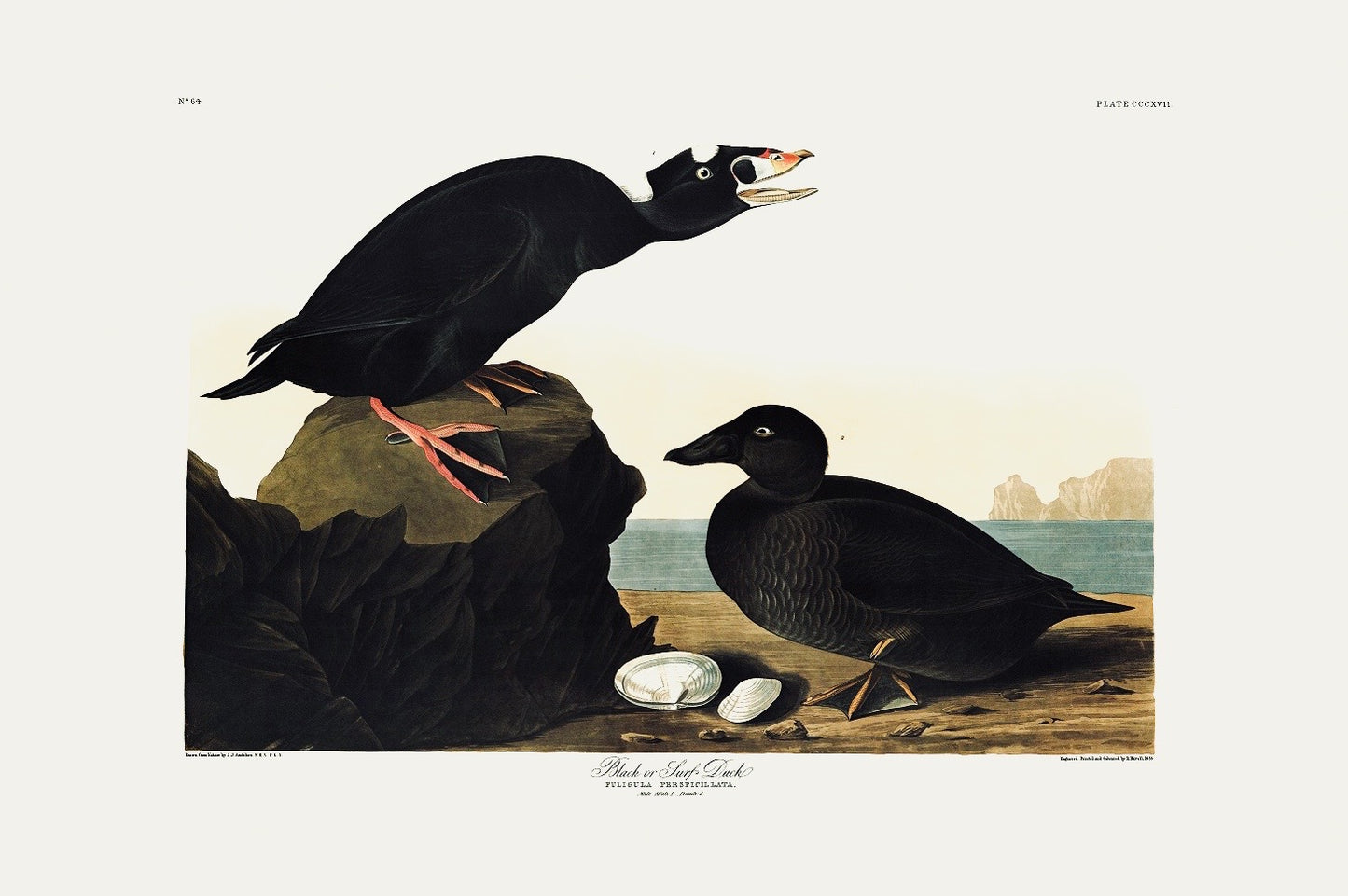Black or Surf Duck
The Surf Scoter or Black Duck
Princeton Audubon Double Elephant Edition •Double elephant (life size - 26 1/4 x 39 1/4) •Limited edition of 1500. •Pencil-numbered and embossed with the Princeton Audubon Limited seal. •Up to 11 color plates used. •Specially developed fade-proof inks. Absolute color fidelity to the actual original. •Printed on a 300 line. •Very heavy archival paper which is recommended by the Library of Congress for archives and is specially toned to match the actual color of the antique originals. •Registered to purchaser. •As permanently displayed at The Royal Society of London, to which Audubon belonged as a Fellow.
About the image itself ...
Audubon painted this pair of surf scoters (a male at left, a female at right) during his voyage to Labrador in 1833. He wrote: "For more than a week after we had anchored in the lovely harbor of Little Macatina, I had been anxiously searching for the nest of this species but in vain: the millions that sped along the shores had no regard for my wishes." Fortunately, he found a nest and wrote that it was hidden among tall grasses, raised about four inches above the ground, and lined with down.
The summer home of the bird is in the boreal forests of Canada and Alaska. During its sojourn in the States it winters in coastal waters, at home in the ocean surf. The male has overall black plumage set off by an orange, black, and white bill, a white eye, and a white patch on the forehead and nape. This remarkable coloration has given rise to some equally remarkable names: speckle-billed coot, blossom-billed coot, patch-head, skunk head, skunk top, goggle-nose, and snuff-taker.
The Surf Scoter or Black Duck
Princeton Audubon Double Elephant Edition •Double elephant (life size - 26 1/4 x 39 1/4) •Limited edition of 1500. •Pencil-numbered and embossed with the Princeton Audubon Limited seal. •Up to 11 color plates used. •Specially developed fade-proof inks. Absolute color fidelity to the actual original. •Printed on a 300 line. •Very heavy archival paper which is recommended by the Library of Congress for archives and is specially toned to match the actual color of the antique originals. •Registered to purchaser. •As permanently displayed at The Royal Society of London, to which Audubon belonged as a Fellow.
About the image itself ...
Audubon painted this pair of surf scoters (a male at left, a female at right) during his voyage to Labrador in 1833. He wrote: "For more than a week after we had anchored in the lovely harbor of Little Macatina, I had been anxiously searching for the nest of this species but in vain: the millions that sped along the shores had no regard for my wishes." Fortunately, he found a nest and wrote that it was hidden among tall grasses, raised about four inches above the ground, and lined with down.
The summer home of the bird is in the boreal forests of Canada and Alaska. During its sojourn in the States it winters in coastal waters, at home in the ocean surf. The male has overall black plumage set off by an orange, black, and white bill, a white eye, and a white patch on the forehead and nape. This remarkable coloration has given rise to some equally remarkable names: speckle-billed coot, blossom-billed coot, patch-head, skunk head, skunk top, goggle-nose, and snuff-taker.
